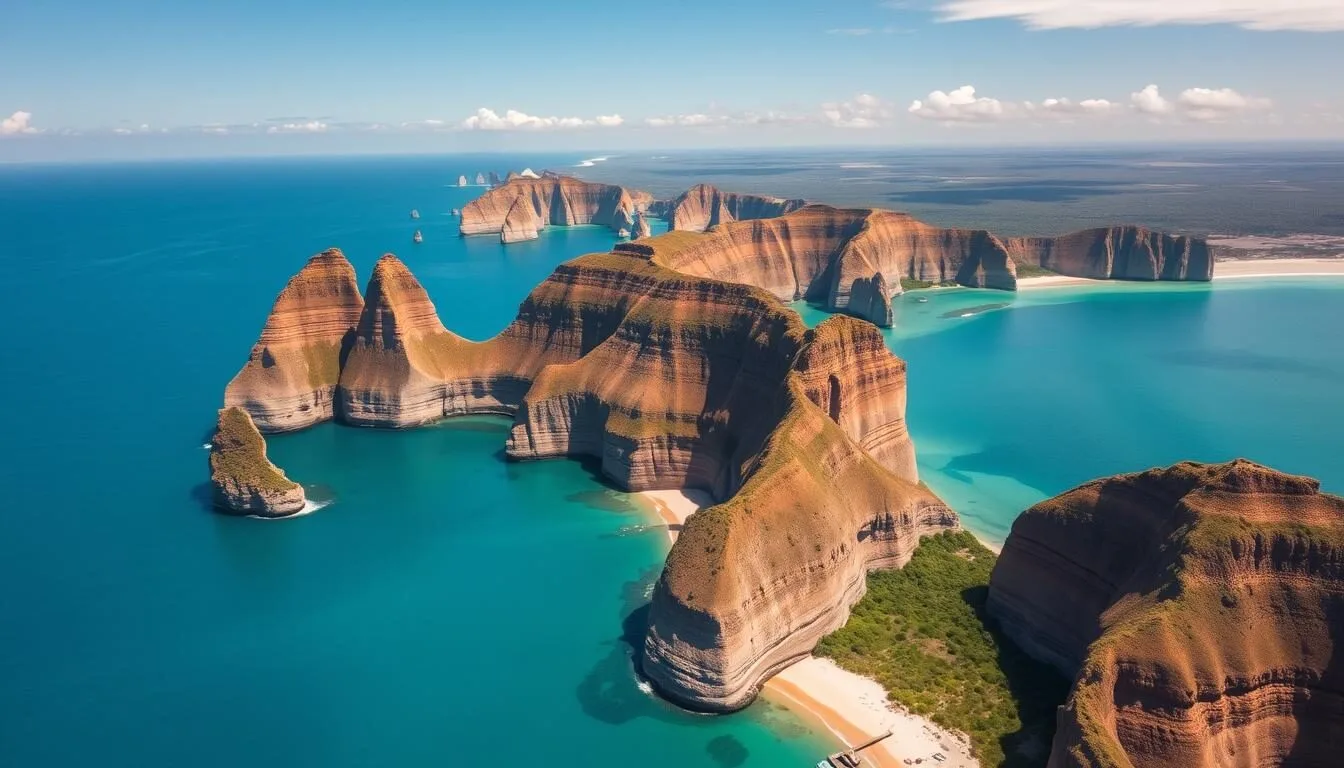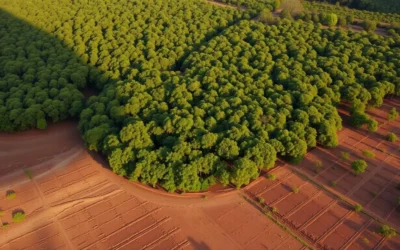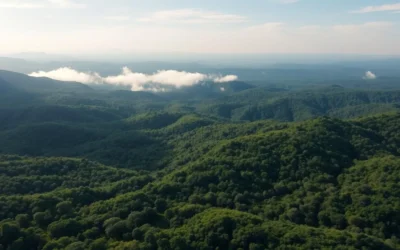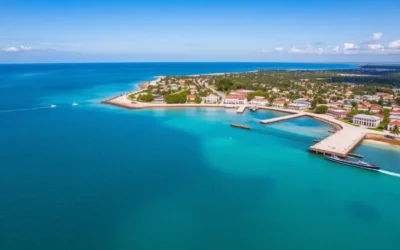Did you know that Nosy Hara National Park is home to Brookesia micra, the world’s second-smallest chameleon that can fit comfortably on the tip of a match? This tiny marvel is just one of the many wonders awaiting discovery in this remote paradise off Madagascar’s northern coast. With its dramatic limestone “tsingy” formations, pristine beaches, and extraordinary biodiversity, Nosy Hara represents one of Madagascar’s last untouched natural treasures.
Discovering Nosy Hara National Park
Nosy Hara, which means “mountainous island” in Malagasy, is part of a small archipelago consisting of twelve uninhabited islands surrounded by coral reefs. Located in northern Madagascar in the Baie du Courrier (Courrier Bay), this 125,471-hectare marine national park was officially established in 2012, though local Sakalava people have long considered these islands sacred or “fady.”
The park’s distinctive landscape features karst plateaus, steep cliffs, and fine sandy beaches sculpted by erosion and marine activity. These geological processes have created unique rock formations and marine cavities that contribute to the island’s extraordinary character and biodiversity.
Ready to Explore Madagascar’s Hidden Gem?
Start planning your adventure to Nosy Hara National Park with our trusted travel partners.
Getting There & Planning Your Journey
Reaching Nosy Hara requires some planning, as this remote paradise isn’t on the typical tourist trail. The journey is part of the adventure, taking you through northern Madagascar’s beautiful landscapes.
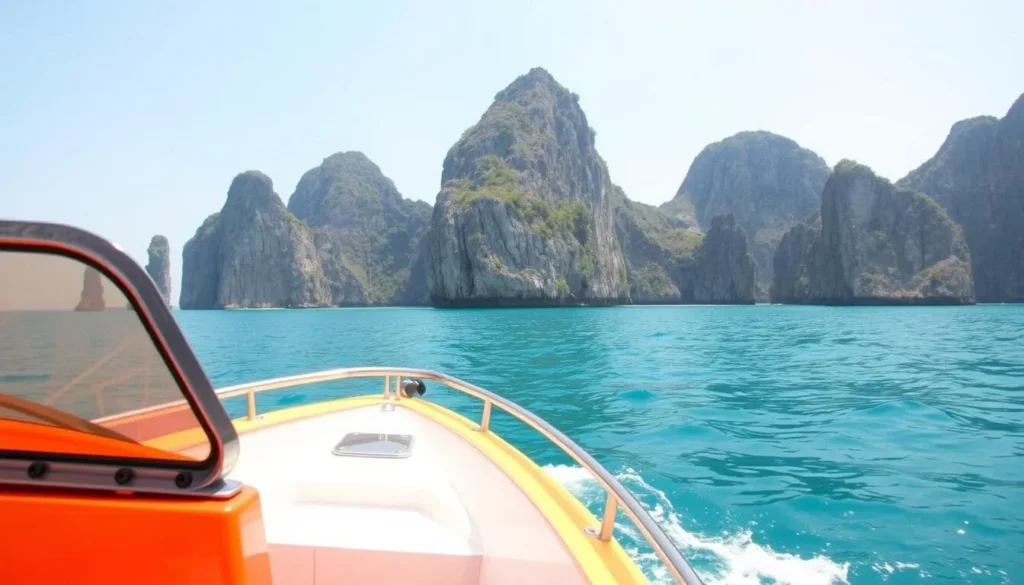
Step-by-Step Travel Guide
- Fly to Antananarivo (Tana), Madagascar’s capital. The journey from the capital to northern Madagascar is approximately 1,000 km by road.
- Take a domestic flight from Antananarivo to Antsiranana (Diego Suarez), the largest coastal town in northern Madagascar.
- From Antsiranana, travel about 34 km overland to Ampasindava. This route is passable during the dry season but can be challenging during wet weather.
- In Ampasindava, board a speedboat for a 45-minute to 1-hour crossing to Nosy Hara.
Important: There are no regular boats to Nosy Hara. Any visit must be announced and planned well in advance (several weeks ahead) through Madagascar National Parks (MNP) or a private tour operator.
Alternatively, if you’re coming from Nosy Be, you can reach the park by sea via the Mitsio archipelago and Cap Saint-Sébastien by pleasure boat in less than 24 hours.
Need Transportation in Madagascar?
Book your rental car to start your journey to Nosy Hara National Park.
Best Time to Visit & Weather Tips

The climate in northwestern Madagascar is primarily hot and relatively dry despite its coastal location. Understanding the seasonal patterns is crucial for planning a successful visit to Nosy Hara National Park.
Recommended: May to November (Dry Season)
- Clear skies and minimal rainfall
- Temperatures around 26-30°C (79-86°F)
- Calm seas make boat transfers safer
- Better conditions for hiking and exploration
- Peak visibility for snorkeling and marine activities
Avoid: December to April (Rainy Season)
- Cyclone risk makes sea crossings dangerous
- Heavy rainfall can make mainland roads impassable
- High humidity levels (above 80%)
- Temperatures reaching 32-35°C (90-95°F)
- Limited access to the park during storms
Packing Tip: Even during the dry season, prepare for intense heat. Bring plenty of water (15 liters per person per day is recommended), sun protection, and lightweight, breathable clothing. There’s no running water or electricity on the island, so pack accordingly.
Where to Stay
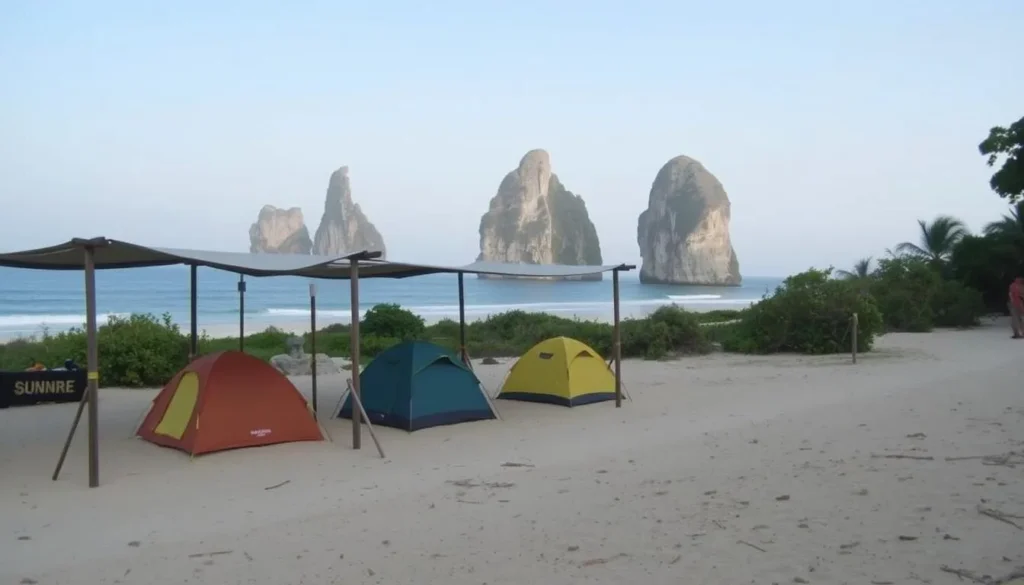
Accommodation options at Nosy Hara National Park are limited and rustic, offering an authentic wilderness experience. If you’re seeking more comfort, you’ll need to base yourself on the mainland and make day trips to the island.
On Nosy Hara Island
Anjavavy Campsite
The only accommodation option on Nosy Hara itself is the basic campsite located near a beautiful bay with a sandy beach on the west side of the island. The facilities include:
- 10 tenting areas (2 with shelters)
- Basic eating area
- Rudimentary kitchen
- Simple toilet facilities
Note: There is no running water or electricity on the island. All drinking water and food must be brought from the mainland.
In Antsiranana (Diego Suarez)
For those preferring more comfortable accommodations, staying in Antsiranana (about 30 km from the departure point) offers a range of options:
Budget Options
- Local guesthouses
- Basic hotels in town
- Shared accommodations
Mid-Range Options
- Boutique hotels
- Comfortable lodges
- Beachfront bungalows
Luxury Options
- Resort hotels in nearby areas
- Private villas
- Upscale lodges with amenities
Find Your Perfect Stay
Browse accommodations in Antsiranana to serve as your base for exploring Nosy Hara National Park.
Attractions, Sightseeing & Activities
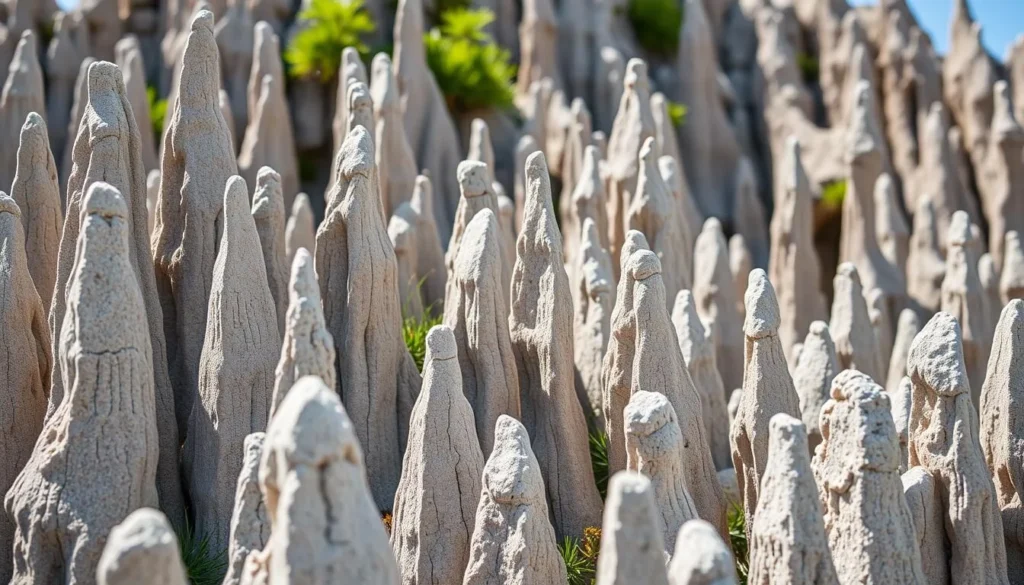
Nosy Hara National Park offers a variety of activities for nature lovers, adventure seekers, and those looking to disconnect from the modern world. Here are the top experiences you shouldn’t miss:
Hiking Trails
| Trail Name | Difficulty | Duration | Highlights |
| Brookesia Trail | Easy | 2-3 hours | Endemic fauna, especially the tiny Brookesia micra chameleon, with panoramic views from a ridge |
| Tsingy Mitsiry | Moderate to Difficult | 4-5 hours | Impressive karst rock formations, local flora and fauna, spectacular scenery |
| Island Circuit | Easy to Moderate | 3-4 hours | Coastal views, beaches, diverse landscapes |
Marine Activities

- Tour des Ilots: A boat trip visiting the islets accessible from Nosy Hara, including Andavakalovo, Belomotro, Ambatomarangitra, Lakandava, Andatsara, and Anjombavola. During this tour, you may spot sea turtles and dolphins year-round.
- Snorkeling: Explore the coral reefs surrounding the islands, home to nearly 80 different fish species and more than 50 species of mollusks.
- Swimming: Enjoy the pristine beaches and crystal-clear waters of the bay.
- Sport Fishing: Try your hand at catching some of the diverse marine species in the area (sustainable practices encouraged).
Experience Nosy Hara’s Natural Wonders
Book guided tours and activities to make the most of your visit to this unique national park.
Unique Wildlife & Biodiversity

Nosy Hara National Park is a biodiversity hotspot, hosting numerous endemic species that have evolved in isolation. The park’s varied ecosystems—from dry forests to coastal areas and coral reefs—support an impressive array of wildlife.
Notable Species
Reptiles & Amphibians
- Brookesia micra (tiny leaf chameleon)
- Panther chameleons (Furcifer pardalis)
- Madagascar ground boa (Acrantophis madagascariensis)
- Fish-scale geckos (Geckolepis spp.)
- Mantella viridis (green mantella frog)
- Paroedura fasciata (recently discovered gecko)
Birds
- Madagascar fish eagle (Haliaeetus vociferoides)
- Sooty terns
- Malagasy paradise flycatcher
- Green pigeons
- Button quails
- Dimorphic egret
Marine Life
- Five species of sea turtles
- Dolphins
- Nearly 80 species of coral fish
- Over 50 species of mollusks
- 108 species of corals
- Seasonal whale migrations
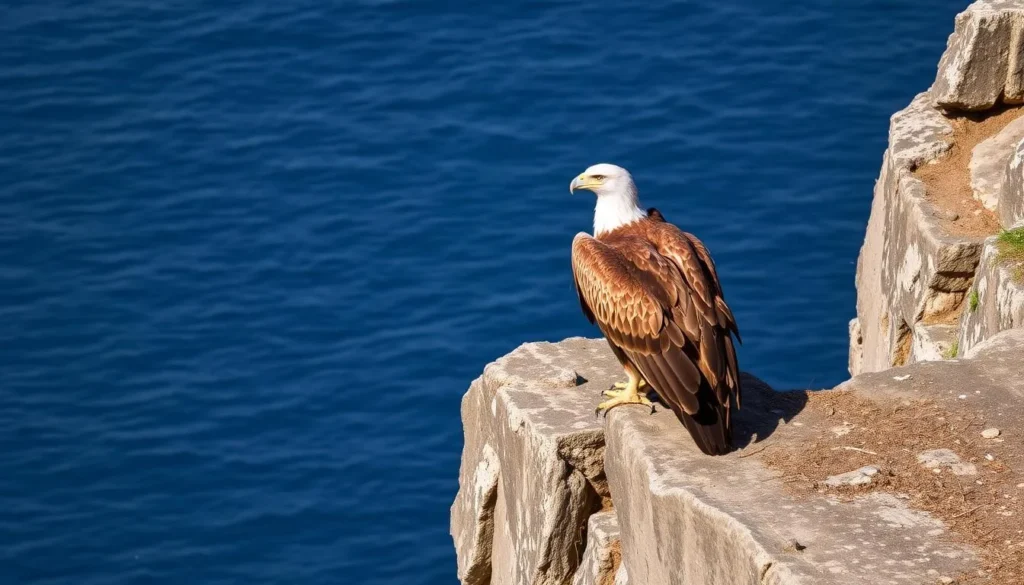
In 2015, scientists discovered dwarf lemurs in the dry forest of Nosy Hara that couldn’t be assigned to any existing species. These may represent an undescribed species, highlighting the park’s importance as a reservoir of undiscovered biodiversity.
“The WWF Marine Programme Advisor described the coral reefs surrounding Nosy Hara as representing some of the highest biodiversity he had ever seen.”
Practical Travel Tips
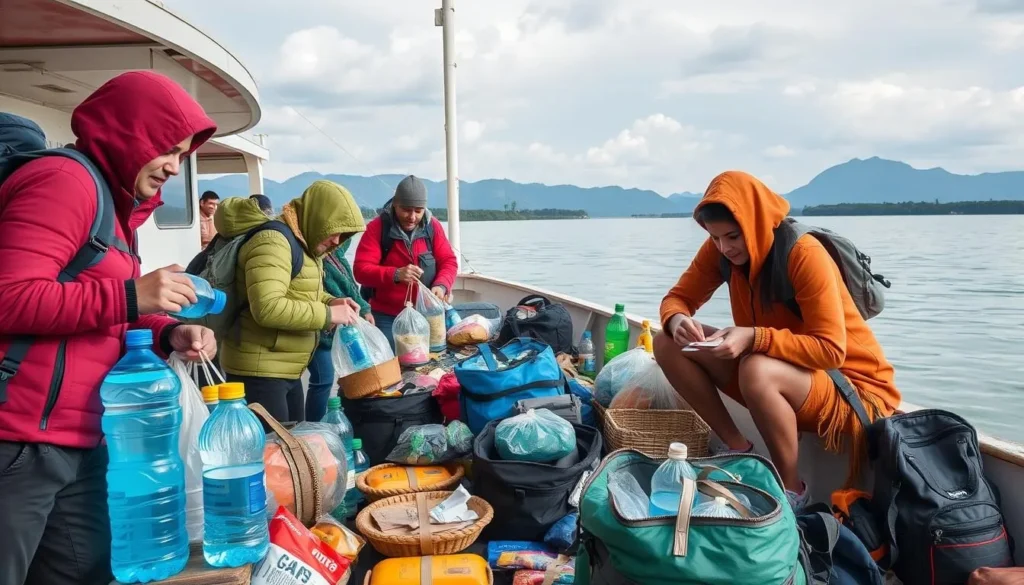
Essential Packing List
For Everyone
- Plenty of drinking water (15 liters per person per day)
- Sun protection (hat, sunglasses, organic sunscreen)
- Lightweight, breathable clothing
- Hiking shoes or sturdy sandals
- Organic mosquito repellent (mandatory in the park)
- Basic first aid kit
- Flashlight or headlamp (no electricity on the island)
For Camping
- Tent (if not renting on-site)
- Sleeping bag and mat
- Cooking equipment
- Food supplies (purchase in Antsiranana)
- Portable water filter or purification tablets
- Garbage bags (pack out what you pack in)
- Biodegradable soap and toiletries
Local Customs & Etiquette
The local Sakalava people consider Nosy Hara sacred or “fady” (taboo). Respect local customs by:
- Asking permission before photographing local people
- Dressing modestly when visiting villages
- Removing shoes when entering homes if invited
- Learning basic Malagasy greetings
- Following guide instructions about restricted areas
Conservation Note: Nosy Hara faces threats including unregulated fishing, turtle poaching, coral trampling, and climate change. Practice responsible tourism by minimizing your impact, avoiding wildlife disturbance, and supporting conservation initiatives.
Ready for Your Nosy Hara Adventure?

Nosy Hara National Park represents one of Madagascar’s last true paradises—a place where nature thrives undisturbed and visitors can experience wilderness in its purest form. From the tiny Brookesia micra chameleon to the majestic limestone tsingy formations and vibrant coral reefs, this remote archipelago offers natural wonders found nowhere else on Earth.
While reaching this hidden gem requires effort and planning, the rewards are immeasurable. Whether you’re hiking through unique landscapes, snorkeling among colorful marine life, or simply enjoying the tranquility of a pristine beach, Nosy Hara offers an authentic connection with nature that’s increasingly rare in our modern world.
Begin Your Madagascar Adventure Today
From flights and accommodations to guided tours, we’ve got everything you need to experience the magic of Nosy Hara National Park.
The above is subject to change.
Check back often to TRAVEL.COM for the latest travel tips and deals.
